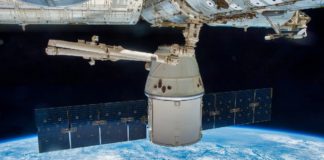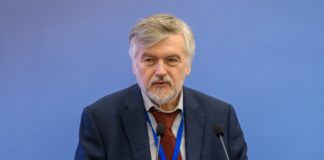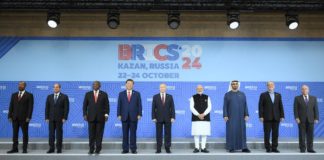 It should push the demand for liquefied natural gas. New investments, especially in geological exploration, are necessary for the Arctic, and, therefore, as Deputy Prime Minister and Presidential Plenipotentiary in the Far Eastern Federal District Yury Trutnev says, the Government will officially propose lifting the moratorium on the development of the Arctic shelf. And Dmitry Kobylkin, Minister of Natural Resources and Ecology of Russia, confirms everything is possible if the required documents are prepared on time.
It should push the demand for liquefied natural gas. New investments, especially in geological exploration, are necessary for the Arctic, and, therefore, as Deputy Prime Minister and Presidential Plenipotentiary in the Far Eastern Federal District Yury Trutnev says, the Government will officially propose lifting the moratorium on the development of the Arctic shelf. And Dmitry Kobylkin, Minister of Natural Resources and Ecology of Russia, confirms everything is possible if the required documents are prepared on time.
Gazprom and Rosneft will have to move over
Russia intends to intensify its economic activity in the Arctic zone. The register of prospective projects to be implemented in the Russian Arctic zone already has 119 entries. The majority of those projects are connected, one way or another, with the production of hydrocarbons.
The bulk of Russia’s and the world’s oil and gas reserves are concentrated in the Arctic – 60 percent or more, according to the Russian Academy of Sciences. Private companies have no access to the Arctic shelf; only those enterprises which are 50 percent or more owned by the state and have at least five-year experience of working on the shelf are allowed to exploit the subsoil there. In addition, this narrow circle has been narrowed even further by the moratorium on issuing new licenses, in force since 2016. Currently, such licenses are held only by Gazprom and Rosneft. However, this year the moratorium may be lifted. At the Fifth International Arctic Forum, «The Arctic: A Territory of Dialogue», Deputy Prime Minister and Presidential Plenipotentiary in the Far Eastern Federal District Yury Trutnev said the government would officially propose lifting the moratorium on the development of the Arctic shelf. And Minister of Natural Resources and Ecology of Russia Dmitry Kobylkin noted that everything was possible if the required documents were made on time.
The Arctic needs new investments, especially in exploration. Currently, estimates on volumes of hydrocarbons on the Arctic shelf vary from 50-60 billion tons of oil equivalent to 100 billion, says Maxim Nechaev, Director for Consulting at IHS Markit Russia. «Natural gas reserves in the Russian Arctic zone amount to 53.4 trillion cubic meters,” says Alexander Novak, Minister of Energy, “Today Russia produces 725 billion cubic meters of gas, of which 83 percent is produced in the Arctic zone. That gas is competitive, despite the fact that it is produced in the Arctic zone, because of the low cost of production, very good quality of natural resources, and their occurrence.» Besides, the Arctic potential is huge, at least another 20 percent of oil and gas resources remain undiscovered, says Peter Stewart, Chief Energy Analyst at Interfax Global Energy.
State support for Arctic investment projects
Lifting the moratorium as early as this year became one of the key news stories at the Arctic Forum. The second was the package of state support measures for investment projects to be implemented in the Arctic. Despite the fact that the final set of preferences has not yet been approved, it is already clear what kind of preferences they will be and who will get them. Notably, the benefits will extend to all investors, both domestic and foreign. “Almost all large projects involve foreign companies,” Yuri Trutnev said. “We will be working together. We will create a system of preferences without dividing them into Russian and foreign ones. It will concern any investors in the Arctic. Those who invest will fall under the system of preferences, it will be absolutely universal.”
The system itself includes two options. The first relates to the grant of preferences for the period from 10 to 15 years depending on the size of the investment project and provides for zero tax rates for profit, property, land, and mineral extraction taxes. The second provides for reduced tax rates, for example, 7, percent profit tax, instead of 20, and similar discounts, two-thirds of the tax amount, on other taxes, for the entire duration of the project. According to Trutnev, businesses preferred the second option, «and the regions preferred it as well, because it allows them to get funds for their budgets as soon as the implementation of the investment project commences.»
Earlier, the president instructed the Ministry for the Development of the Far East and the Arctic to submit a draft law to the government on measures of state support for the Arctic projects until July 1, 2019. And by September 1 the Government should ensure that long-term legally binding agreements be entered into with cargo shippers on the volume and cost of transportation of goods along the Northern Sea Route (NSR). The prospects for the development of that waterway, without exaggeration, became the main topic of the forum.
Arctic Development Institutions
The influence of the Far Eastern development institutions (Far East Development Corporation, Far East Investments and Export Agency and others) will be extended to the Arctic zone, said Russian President Vladimir Putin. However, no separate priority development areas will be created in the Arctic, by analogy with those operating in the Far East . “We will regard the entire Arctic as a preferential territory. It will apply to all brand-new projects worth in excess of five million rubles. We would like to highlight four groups of projects: the production of hydrocarbons on the shelf, the production of hydrocarbons on the continental part, the production of liquefied natural gas, and all the projects that are not included in the first three groups,” said Trutnev. “For each of these groups, preference packages will be developed, and for the first three groups, because the number of economic actors is limited – few are engaged in hydrocarbon extraction and LNG production projects in the Arctic, we will try to take into account the companies’ wishes and offer them preferences on such terms as to ensure their effective operation.»
According to Deputy Prime Minister, the Ministry of Finance has tentatively supported those proposals; “it has a more complex attitude towards social insurance and tax deduction on exploration and infrastructure, the main battle will be raging around those indicators,” Trutnev said. The final proposals will be prepared and submitted to the government in the nearest future, Deputy Prime Minister said.
General Director of Rosatom Alexei Likhachev has promised that by 2024 the volume of freight traffic in the NSR will have reached 92.6 million tons. Of that volume, gas will account for 41 million tons, coal 23 million tons, oil 14.1 million tons, rail transported cargoes for marine exports 8 million tons, etc. Since 2020, the fleet of icebreakers will be annually replenished, and it will ensure year-round navigation along the Northern Sea Route by 2030.
Development of the Northern Sea Route
“The Arctic is, above all, the development of the Northern Sea Route as a central project,” said Deputy Prime Minister Maxim Akimov. “We have long surpassed the Soviet record cargo traffic of six million tons transported via the NSR, we have reached 20 million tons, we will reach 80. We will solve the task set by the presidential decree, we will be moving forward. That is why we are now working on a plan for the development of the infrastructure until 2035. We see the NSR mainly as a modern multimodal digital logistics corridor.”
According to Akimov, the government’s attention is now focused on creating favorable conditions for the development of a cargo base, to be used mostly for liquefied natural gas (LNG). Thus, Russia plans to increase its production of liquefied natural gas to 73 million tons per year by 2025, and the Ministry of Energy expects Russia to produce 100-140 million tons of LNG per year in another decade, by 2035. The plan was announced by Alexander Novak.
Over the past 10 years, gas consumption grew by 40% or 1,477 trillion cubic meters, domestic production increased by 1.7 trillion cubic meters, trade increased from 1,134 to 1,778 trillion, or by 57%. Previously, LNG accounted to approximately 30%, its share will increase to 51% by 2025, and up to 70% by 2040. 10 years ago, only 7 or 8 countries were LNG exporters, and the same number of countries were buying it. That number increased to 40 in 2018 and 42 in 2019. Additional demand will constitute 300 to 350 million tons over the period until 2035. Russia may occupy 30-40 % of that niche.
Author: Elena Berezina



